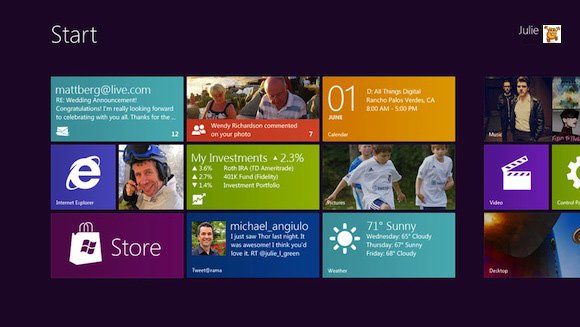
Windows 8 Is Not For Everyone
Windows 8 is a personal computer operating system developed by Microsoft as part of the Windows NT family of operating systems. Development of Windows 8 started before the release of its predecessor, Windows 7, in 2009. It was announced at CES 2011, and followed by the release of three pre-release versions from September 2011 to May 2012. The operating system was released to manufacturing on August 1, 2012, and was released for general availability on October 26, 2012.
Windows 8 isn’t for everyone. If you’re mostly a desktop PC user comfortable with Windows 7, upgrading to Windows 8 is probably not worthwhile.
Windows 8 tries to get you to tie your Windows login to your Microsoft account; it’s optional, but if you do link the two, the Windows login and password serve as your Microsoft account login and password.
The Windows 8 interface acts as the Start menu now. Instead of appearing as columns of small icons that pop up when you click the Start button, all your applications show up as tiles on the Windows 8 Start screen. PCs with the new OS installed will boot into the Windows 8 interface; the OS offers no built-in way to set it to boot to the traditional Windows desktop.
You cannot boot directly into the desktop, since Microsoft wants the Start screen to be users’ initial experience with this new version of Windows. For most people, this restriction may not be an issue, but certain vertical applications (specialized programs, such as those for point-of-sale PCs) need to boot directly into a desktop environment. Until Windows 8 versions of such programs become available, users requiring vertical applications should stick with earlier versions of Windows.
Windows 8 introduced major changes to the operating system’s platform and user interface to improve its user experience on tablets, where Windows was now competing with mobile operating systems, including Android and iOS. In particular, these changes included a touch-optimized Windows shell based on Microsoft’s “Metro” design language, the Start screen (which displays programs and dynamically updated content on a grid of tiles), a new platform for developing “apps” with an emphasis on touchscreen input, integration with online services (including the ability to synchronize apps and settings between devices), and Windows Store, an online store for downloading and purchasing new software.
Windows 8 added support for USB 3.0, Advanced Format hard drives, near field communications, and cloud computing. Additional security features were introduced, such as built-in antivirus software, integration with Microsoft SmartScreen phishing filtering service and support for UEFI Secure Boot on supported devices with UEFI firmware, to prevent malware from infecting the boot process.
Pros
- New, improved file system
- Easier recovery from system problems
- Better integration with the cloud
Cons
- The missing Start menu will drive some people nuts
- Overly aggressive when it comes to selling apps and content
- Some aspects of the OS are unnecessarily confusing
Windows 8.x Installation Software Bargains